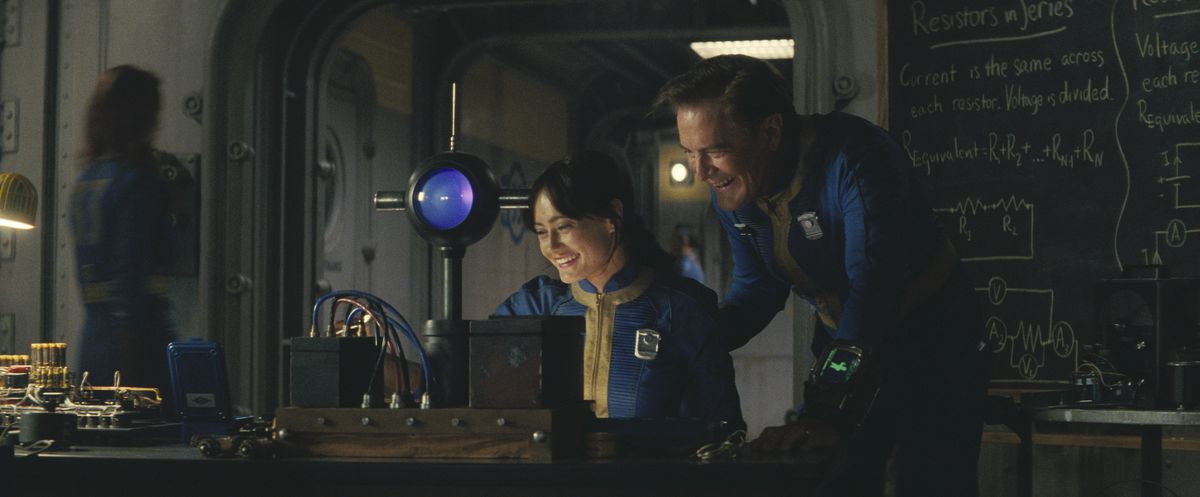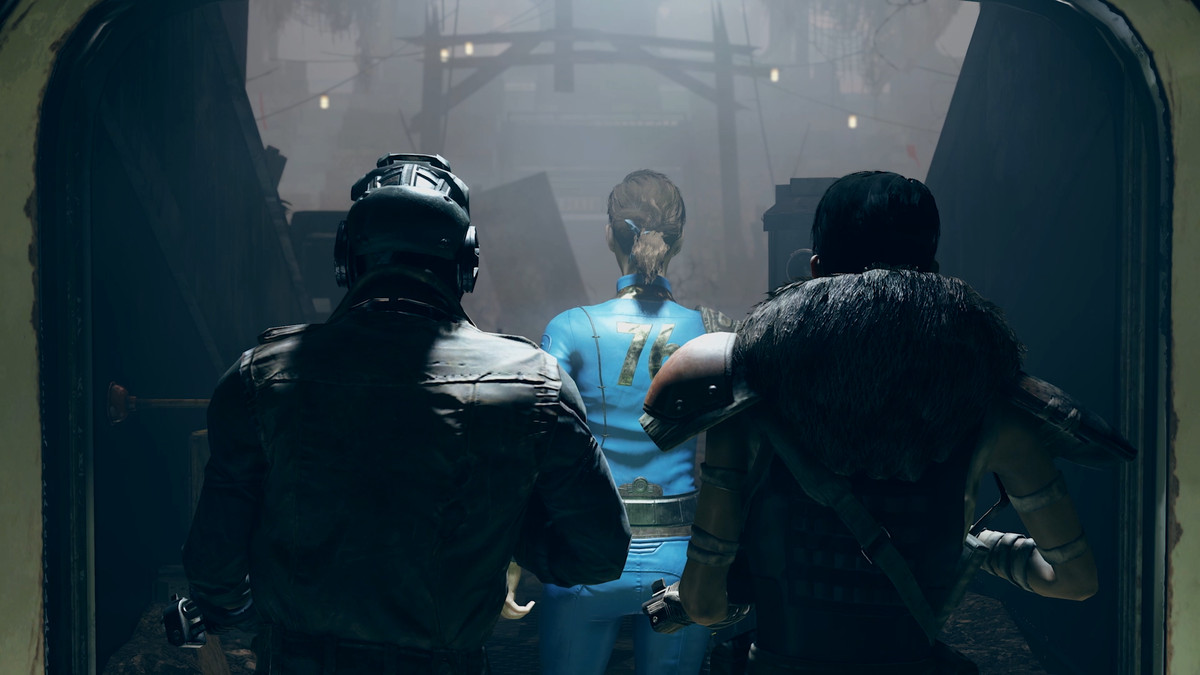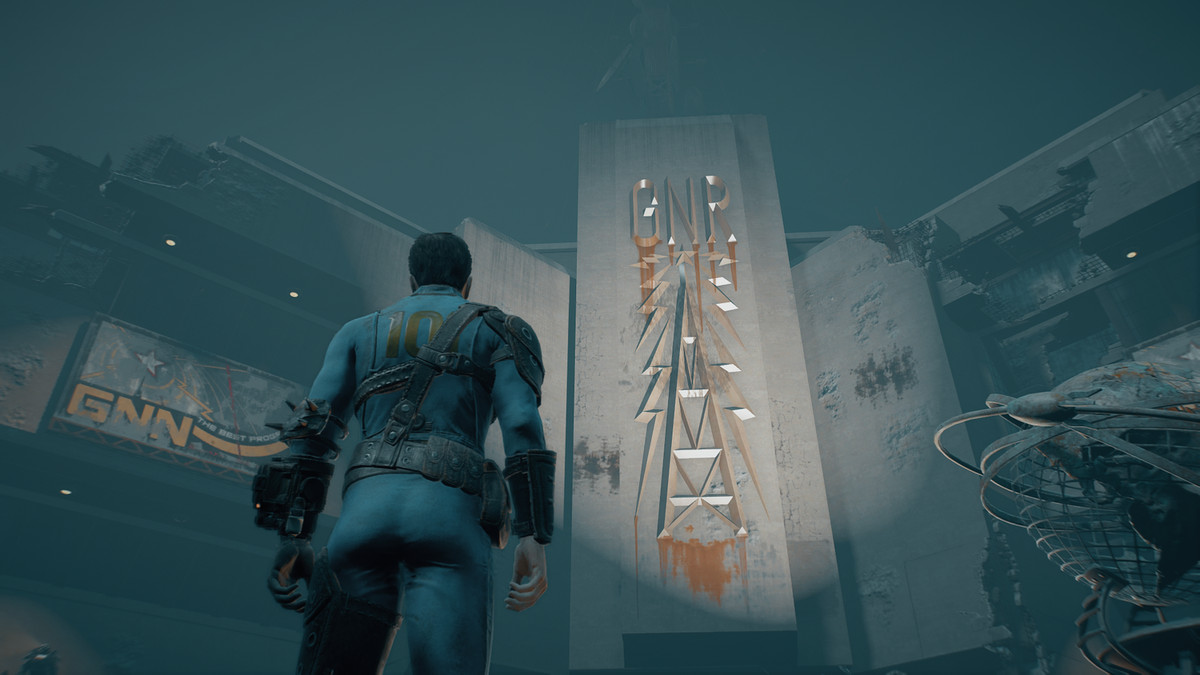Fallout’s Vaults has even crazier experiments in the games
(Ed. remark: This post contains spoilers for Fallout season 1, as well as information from the Fallout games.)
The Vault systems in the Fallout franchise are meant to be a utopia, a refuge from the harsh apocalyptic Wasteland and nuclear fire.
Of course, nothing is as it seems, and a little digging (Lucy’s journey within Fallout season 1 or play until the end of Fallout 2) reveals that the Vault systems are actually a way to experiment on survivors. Some of the premises are so wild or impractical that they don’t seem like experiments at all, and many have failed spectacularly. (According to series creator Tim Cain, the purpose was to test humanity’s ability to travel through spacebut this isn’t in any of the games so far.)
There are two experiments in the Prime Video show that we get to see: Vault 4 and the combined network of Vaults 31, 32, and 33. Something like Vault 4 is relatively simple: a society ruled by scientists. Unfortunately, the scientists’ experiments spiraled out of control, creating monstrous messes and requiring a total restructuring of their society.
Vaults 31, 32 and 33 are slightly more complex. These interconnected Vaults are interdependent, with the members of 33 and 32 arranging marriages to diversify their populations. Early on, it appears that 32 were fallen by robbers. However, Norm and Chet soon discover that the residents of 32 died long before any raiders ever arrived due to a terrible famine. As for Vault 31, we learn that Vault-Tec executives are frozen here and will be thawed when a new Overseer needs to be installed.
If you’re curious about the other Vaults spread across Fallout’s vast canon, here’s a list of the monstrous experiments Vault-Tec conducted after the apocalypse.
Image: Primevideo
Vault 4: Those poor, unfortunate scientists. Now populated with the survivors, combined with refugees from Shady Sands. Chris Parnell plays the good-natured Overseer, with a somewhat strange single eye.
Vault 8: A control vault, meaning there was no active experiment. After 10 years, the Vault opened and used the Garden of Eden Creation Kit to create the large and successful Vault City.
Vault 11: This vault had a psychological test where residents had to vote for one human sacrifice each year or lose all life support. The cruel conclusion of the experiment is that if the Vault Dwellers refused to sacrifice any of their own, the Vault would open and allow them to leave unharmed. Unsurprisingly, this did not happen, and the results were tragic.
Vault 12: What happens if the safe door does not close properly and radiation gets in? The answer is Necropolis, a community of Ghouls.
Vault 13: The house of the original Fallout‘s main character. Vault 13 was meant to remain closed for 200 years, but a faulty water chip led to one of their own forays into the world in search of a solution.
Vault 15: This hermitage remained closed for fifty years and the population consisted of people with different backgrounds and ideologies. Some of the population of this hermitage went on to found Shady Sands and eventually the New California Republic.
Vault 19: This hermitage housed two associations, red and blue, each with one supervisor. What the residents didn’t know is that they were being flooded with subliminal messages to turn them against each other, eventually culminating in a civil war.
Vault 21: What if all conflicts had to be resolved by gambling? The Vault would later be taken over by Mr. House and converted into a pleasant new hotel for tourists to New Vegas.
Vault 22: At first glance, it is the dream of every botanist, in which the experiment consists of developing plant life in the vault using sophisticated and sophisticated equipment. A parasitic fungus turned on the researchers and consumed the safe.
Vault 27: Filled with a double sustainable population.
Vault 29: The age limit for residents was 15 years.
Vaults 31, 32 and 33: Lucy’s Vault (33), and the site of much intrigue in season 1 of Fallout. The gist is that these three Vaults are connected, and 32 and 33 often exchange inhabitants to diversify the gene pool and create new generations. Things go terribly wrong when the population of 32 is replaced by robbers, who attack – thus beginning the events of the show. Lucy and the other Vault residents do not realize an experiment is underway; they think this is the good life. And as mentioned above, Vault 31 is there to house frozen Vault-Tec personnel who can be taken to Vaults 32 and 33 if necessary.

Vault 34: The armory was filled with weapons and there was no proper locking mechanism on the door. Ultimately it failed due to a riot and reactor damage.
Vault 36: Instead of good food, the residents were given only a thin, watery porridge.
Vault 42: There were no light bulbs above 40 watts, which probably meant this Vault had a dim future.
Vault 51: This vault was intended to test the limits of human tribalism, with an experimental AI running the show and selecting the Overseer. Perhaps unsurprisingly, the AI ended up killing the Vault’s occupants rather than rigorously testing them.
Vault 53: The equipment is designed to continuously exhibit small but recoverable malfunctions in order to study the effect of stress on the vault’s inhabitants.
Vault 55 and 56: In Vault 55, all entertainment tapes have been removed. In Vault 56, they were all removed except for one really bad comedian. Truly, a terrifying fate.
Vault 68 and 69: In Vault 68, the population consisted of only one woman. This ratio was reversed for Vault 69. This is one of the Vaults that feels particularly disinterested in scientific curiosity in favor of cruelty; it’s hard to see a situation where Vault 68 thrives.
Vault 70: The Vault stopped producing jumpsuits after six months.
Vault 75: This experiment aimed to breed the perfect human, with failures burned and successes joining the scientific staff to try to improve the process for the next generation.

Vault 76: A control vault, and the one from which everything Fallout 76 players emerge.
Vault 81: A vault focused on researching diseases and antibodies. As with Vault 75, the residents were openly used as guinea pigs.
Vault 87: Experimenting on humans using the Forced Evolutionary Virus, leading to super mutants appearing in the Capital Wasteland of Fallout 3.
Vault 92: This vault was filled with talented musicians, and then they were exposed to white noise that unconsciously implanted battle suggestions. The musicians all went crazy and descended into murder and mayhem.
Vault 94: Filled to the brim with pacifists and laid-back people, this vault was meant to prove humanity’s innate goodness. A year after the Great War, the doors opened and looters promptly blew the whole thing up.
Vault 95: Each resident struggled with drug addiction, and this vault was designed to study their withdrawal symptoms and then re-expose them to an endless supply of chems. The vault collapsed shortly afterwards.
Vault 96: The vault was filled with embryos that would be artificially raised to adulthood and then released into the Wasteland with robot companions and protectors.
Vault 101: A vault designed to remain in total isolation from the outside world – until the events of Fallout 3 Kickoff begins and the Lone Wanderer sets out to find their father, James. It’s a nice parallel to Lucy and her search for her father.

Vault 106: Psychoactive drugs were released into the air after the door was closed. We can only hope that the residents had a good trip.
Vault 108: The Vault was left without reliable leadership, and during its isolation from the world, the survivors accidentally cloned a slew of Gary. These clones haunt the Vault and can only say one word: “Gary.”
Vault 111: The survivors in this vault were cryogenically frozen, with staff, security and scientists ensuring their pods remained operational. The Vault failed in 2078, and 210 years later, the Sole Survivor emerges from their pod to find their son Shaun.
Vault 112: Dr. Stanislaus Braun took a much smaller population into this vault and hooked them up to virtual reality pods, where they could experience a real utopia. Braun eventually got bored, and the experiment became much more sinister as he hunted down every survivor in their virtual reality, killed them, erased their memories, and started over.
Vault 114: Members of higher social classes were welcomed into this hermitage, but found it overcrowded and minimally equipped. The Overseer was selected from outside the usual population, with the intention of finding the most vulgar and anti-authority candidate possible.
Vault 118: This vault was meant to be filled with the ultra-rich and the working poor. But before the working poor could arrive, funding ran out. The wealthy residents would remove their brains and implant them in robots to survive forever.
